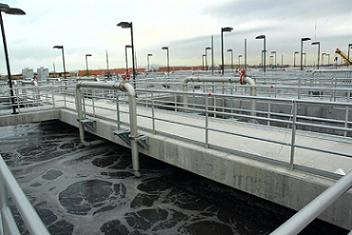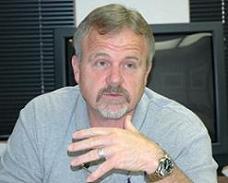Salt Lake City Water Reclamation Plant Upgrade Startup Underway
New Trickling Filter/Activated Sludge process added to wastewater treatment processes.
March 26, 2007
|
This most recent capital investment in the City’s Water Reclamation plant is one of many improvements to the 42-year-old facility. The secondary trickling treatment plant was upgraded between 1982 and 1989 with improvements contained in the 201 Plan, Phases I – III at a total cost of $31.0 million.
With capital investments, strong leadership and dedicated employees, the Water Reclamation Plant has earned 17 NACWA "Gold Awards." At the end of 2006, the wastewater treatment facility has completed 181 consecutive months of perfect NPDES permit compliance.
The genesis of the current improvements to the secondary treatment process began in 2000. From 1995 to 2000 the peak organic loading (TBOD) to the plant doubled to 83,406 lbs/day. This prompted concern that if this trend continued, the plant would reach its capacity in approximately two years. Public Utilities commissioned an engineering study to determine the City’s wastewater treatment needs to the year 2025 when it was estimated that the plant would need the capacity to treat 121,000 lbs/day of TBOD.
In conjunction with additional treatment capacity, a new sewer user rate structure and rate increase was implemented to help reduce the organic loading at the treatment plant. The new sewer rate established an increasing rate schedule based on the strength of the waste water. This incentive rate structure has proven effective, as the organic loading rate of increase leveled off. In 2006, the peak TBOD was 66,569 lbs/day.
In 2002 the engineering consultant recommended the construction of a new Trickling Filter/Activated Sludge process to adequately treat the projected increase in organic loading coming into the treatment facility in the year 2025. The active sludge provides increased removal of soluble BOD in the trickling filter effluent.
|
On March 7, the new activated sludge process was started for testing. This has been a challenging time for the plant employees. Besides the difficulty in operating a new unit process, there is always a risk of violating the plant’s NPDES permit – not to mention the stress of working with new equipment, the contractor and consulting engineer. “On a brighter note, we are in compliance and the numbers are looking better for TSS and really good for BOD” exclaims water reclamation manager Jon Adams. He adds, “When the process is fully operational, it’s possible that the plant can produce water effluent at 5/5 ppm BOD and TTS.

